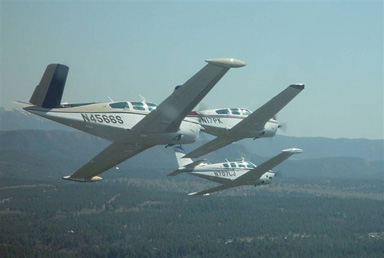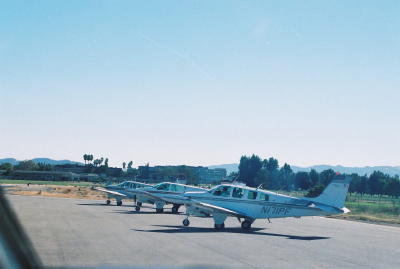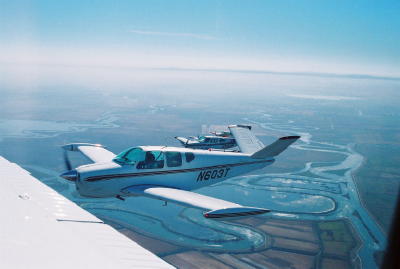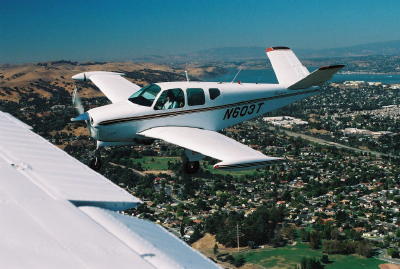Jim Lane, Terry Calloway, Tom Kendall practicing "on-your own".
This was a refresher practice,
all B2OSH trained.
photo Bill Stovall |
Jim Posner (lead), Larry Gaines, Mark Merrill Appropriate run-up position. Paul Marshall pulling into position - practicing
"on their own"
photo by Dick Filson
|
California Beech Boys
practicing "on their own"
Paul Marshall, lead, Larry Gaines, Jim Posner, Mark Merrill, Stan Stewart
Yes, five aircraft echelon right.
photo by Dick Filson |
Larry Gaines demonstrating his trust in Paul Marshall to bring him to the runway.
Gear down, he maintains position all the way to landing.
photo by Dick Filson |



